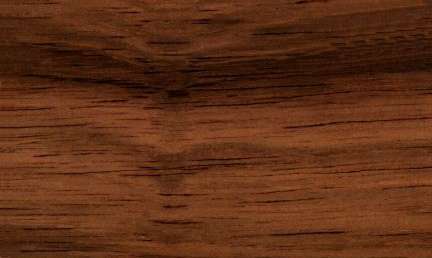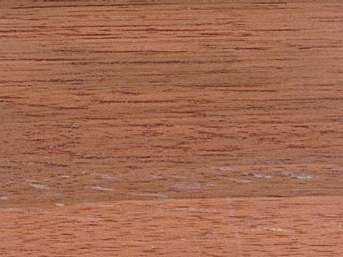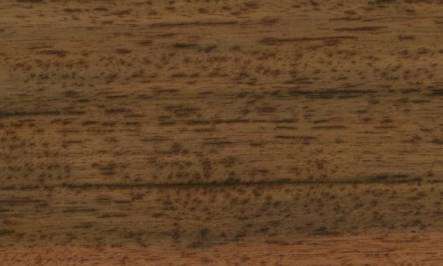  
Tchitola (Oxystigma oxyphyllum)
Family: Leguminosae
Common names: Akwakwa, Copal, Emola, Emoli, Emolo, Kitola, Lolagbola, M'babou, Maranda, Mbabou, Mushili mukunze, Mushilu mukunze, Red tola, Rotes tola, Tchibudimbu, Tchitola, Tntie budimbu, Tntubudimbu, Tola chimfuta, Tola mafula, Tola mafuta, Tola noir, Tola walnut, Tshibudimbu tshikunze, Tuba
Distributed in: Angola, Cameroon, Congo, Gabon, Nigeria, Zaire (Africa)
Common uses: Agricultural implements, Baskets, Boat building (general), Boxes and crates, Cabinetmaking, Chairs, Chests, Concealed parts (Furniture), Cooperages, Decorative plywood, Decorative veneer, Desks, Dining-room furniture, Dowell pins, Dowells, Drawer sides, Excelsior, Figured veneer, Fine furniture, Floor lamps, Food containers, Furniture , Furniture components, Furniture squares or stock, Furniture, Hatracks, Heavy construction, Joinery, Kitchen cabinets, Light construction, Living-room suites, Office furniture, Paneling, Plywood, Posts, Pulp/Paper products, Radio - stereo - TV cabinets, Railroad ties, Rustic furniture, Stools, Tables , Textile equipment, Tool handles, Turnery, Utility furniture, Vehicle parts, Veneer, Veneer: decorative, Wardrobes
Environment profile: Data source is World Conservation Monitoring Center
This species is relatively secure within its natural habitat in most areas in its range, including Congo, but it is officially classified as Rare in Cameroon. Its status in the wild is currently listed as unknown because of insufficient information in Angola, Gabon, Nigeria, and Zaire
Tree size: Tree height is 30-40 m
The timber is reported to grow to a height of up to 150 feet (45 m), with a trunk diameter that is commonly 24 to 36 inches (60 to 90 cm), sometimes up to 72 inches (180 cm). It develops a bole that is often straight and well-formed, with a merchantable length of about 70 feet (21 m).
Colors: the heart isReddish brown, Yellowand the sapwoodWhite to yellow, Yellow.The grain isStraight, the textureMedium coarse to coarseand the lusterMedium
Natural durability: Susceptible to marine borer attack, Very durable
Odor: No specific smell or taste
Kiln Schedules: US=T5D2
Drying Defects: Some splitting and distortion may also develop during drying , Splitting
Ease of Drying: Reconditioning Treatement
Tree Identification: Bole/stem form is straight
Comments: General finishing qualities are rated as satisfactory
Blunting Effect: Slight blunting effect on cutters
Boring: Very good to excellent results
Carving: Fairly Easy to Very Easy
Cutting Resistance: Saws rapidly and easily to yield smooth surfaces
Gluing: Glues well
Mortising: Fairly Easy to Very Easy
Moulding: Fairly Easy to Very Easy
Movement in Service: Fairly Easy to Very Easy
Nailing: Good nailing characteristics, Holds nails well
Planing: Tools may be choked by gum.
Resistance to Impregnation: Sapwood is moderately resistant
Response to hand tools: Responds well to hand tools
Routing recessing: Fairly Easy to Very Easy
Sanding: Yields a smooth surface
Veneering qualities: No steaming needed during bolt preparation., Suitable for slicing
Steam bending: Poor to Very Poor Results
Screwing: Good screwing properties, Screwing yields good results; Turning: Fairly Easy to Very Easy
Painting: Good; Polishing: Very Good to Excellent; Staining: Very Good to Excellent; Varnishing: Good;
- Numerical data Metric
- Numerical data English
- Strength properties
- References
 |
 |
 |
 |
| Item |
Green |
Dry |
Metric |
| Specific Gravity |
0,49 |
0,53 |
|
| Density |
|
641 |
kg/m3 |
| Bending Strength |
791 |
1137 |
kg/cm2 |
| Crushing Strength |
393 |
578 |
kg/cm2 |
| Hardness |
|
555 |
kg |
| Impact Strength |
|
86 |
cm |
| Shearing Strength |
|
104 |
kg/cm2 |
| Stiffness |
97 |
110 |
1000 kg/cm2 |
| Tangential Shrinkage |
|
|
% |
| Radial Shrinkage |
5 |
|
% |
| Weight |
673 |
624 |
kg/m3 |
| Maximum Load |
|
|
cm-kg/cm3 |
| Toughness |
|
|
cm-kg |
| Static Bending |
|
|
kg/cm2 |
|
 |  |  |  | | Item | Green | Dry | English | | Bending Strength | 11264 | 16177 | psi | | Density | | 40 | lbs/ft3 | | Hardness | | 1224 | lbs | | Impact Strength | | 34 | inches | | Maximum Crushing Strength | 5602 | 8233 | psi | | Shearing Strength | | 1486 | psi | | Stiffness | 1389 | 1571 | 1000 psi | | Specific Gravity | 0.49 | 0.53 | | | Weight | 42 | 39 | lbs/ft3 | | Radial Shrinkage | 5 | | % | | Tangential Shrinkage | 9 | | % | |
Density (dry weight) = 38-45 lbs/cu. ft. 1
Max. crushing strength = high
Hardness (side grain) = soft
Bending strength (MOR) = high
Modulus of Elasticity (stiffness) = low
Max. crushing strength = medium
Bending strength (MOR) = medium
Modulus of Elasticity (stiffness) = very low
Hardness (side grain) = medium
Density (dry weight) = 31-37 lbs/cu. ft.
Shrinkage, Tangential = large
Shearing strength (parallel to grain) = very low
Bending strength (MOR) = low
Shrinkage, Tangential = moderate
Shrinkage, Radial = small
Shrinkage, Radial = large
Shrinkage, Radial = fairly large
Density (dry weight) = 46-52 lbs/cu. ft.
Weight = heavy
Toughness-Hammer drop (Impact Strength) = medium
Toughness-Hammer drop (Impact Strength) = low
Shrinkage, Tangential = fairly large
Shearing strength (parallel to grain) = low
Density = high
Compression strength (parallel to grain) = high
Bending strength (MOR) = very high
Bending strength in the air-dry condition (about 12 percent moisture content) is high - comparable to Teak. Teak, White oak, and Hard maple have high crushing strength. It resists denting and marring about as well as white oak or birch
Banks, C.H. and J.P. Schoeman. 1963. Railway Sleeper and Crossing Timbers. Bulletin No. 41, Republic of South Africa. The Government Printer, Pretoria, South Africa.Banks, C.H., Schoeman, J.P., Otto, K.P.,1977,The Mechanical Properties of Timbers with particular reference to South,Africa,South African Forestry Research Institute Bulletin,(Ed.,Schoeman, J.P. 1973 & Otto K.P. 1976,No.48Bois et Forets des Tropiques,1952,Tchitola (Oxystigma oxyphyllum,Bois et Forets des Tropiques,No23,p175Bolza, E., Keating, W.G.,1972,African Timbers - the Properties, Uses and Characteristics of 700 Species,C.S.I.R.O. Div. of Building ResearchBrown, W.H.,1969,Properties and uses of Tropical hardwoods in the United Kingdom. Part 1,Nonstructural properties and uses.,Conference on Tropical hardwoods SC-5/TN-5, Syracuse UniversityChudnoff, M.,1984,Tropical Timbers of the World,U.S.A. Department of Agriculture, Forest Service, Forest Products,Laboratory, Madison.Erfurth, T., Rusche, H.,1976,The Marketing of Tropical Wood A. Wood Species from African Moist Forests,F.A.O. Forestry DepartmentFarmer, R.H.,1972,Handbook of Hardwoods,HMSOFerreirinha, M.P.,1959,Maderas do Ultramar Portugues,Garcia de Orta,7(2)Ferreirinha, M.P.,1962,Madeiras de Angola - 2nd Series,Garcia de orta Lisbon,10 (1)Fouarge, J., Gerard, G.,1964,Bois du Mayumbe,I.N.E.A.C. BelguimFouarge, J.,1950,Appropriation de Bois Congolais aux Besoins de la Metropole,I.N.E.A.C. Belgium Serie Technique,No.38Fouarge, J.,1953,Bois du Congo,I.N.E.A.C.France - C.T.F.T./C.T.B.,1982,Guide pour le Choix des Essences Deroulables-pour la fabrication du,contreplaque,C.T.F.T./C.T.B. FranceFrance - C.T.F.T.,1966,Bois Tropicaux,C.T.F.T. Publ.,12France - C.T.F.T.,1973,Investigations and Tests carried out on Tropical Timber by several,Research Laboratories,CTFTFrance - C.T.F.T.,1977,Promotion of African Timbers - New Species,CTFT,35 LeafletsHMSO.1972.Handbook of Hardwoods.2nd Edition.Revised by R.H. Farmer.Department of the Environment, Building Research Establishment, Princes Risborough Laboratory, Princes Risborough, Aylesbury, Buckinghamshire.Hughes, J.F.,1971,The Principal Timber Trees of Cameroon,Unpublished dataI.U.F.R.O.,1973,Veneer Species of the World,Assembled at F.P.L. Madison on behalf of I.U.F.R.O. Working Party on,Slicing and Veneer CuttingITTO.1986.Tropical Timber Atlas, Volume 1 - Africa.International Tropical Timber Organization (ITTO) and Centre Technique Forestier Tropical (CTFT, 45bis, Avenue de la Belle Gabrielle, Nogent-sur-Marne Cedex, France.Jay, B.A.,1968,Timbers of West Africa,TRADA, Red Booklet SeriesKukachka, B.F.,1970,Properties of Imported Tropical Woods,Forest Research Paper FPL 125Lavers, G.M.,1983,The Strength Properties of Timber (3rd ed. revised Moore G.L.,Forest Products Research Laboratory, Princes Risborough, Building Research,Establishment Report (formerly Bulletin No.50)Lebacq, L., Dechamps, R.,1967,Contribution a un Inventaire de Forets du Nord-kasai,Musee Royal de L'Afrique Centrale Belgium Annals Series 8 No.5Pieters, A.,1977,Essences Forestieres du Zaire,R.U.G. Gent BelguimRendle, B.J.,1969,World Timbers (3 Vols.,Ernest Benn Ltd. LondonSaint-Aubin, G. de,1963,La Foret du Gabon,CTFT Publ., No.21Sallenave, P.,1955,Proprietes Phyiques et Mecaniques des Bois Tropicaux de l'Union Francaise,C.T.F.TTakahashi, A.,1978,Compilation of Data on the Mechanical Properties of Foreign Woods (Part,III) Africa,Shimane University, Japan, Research Report on Foreign Wood No. 7WCMC. 1992. Conservation Status Listing: Trees and Timbers of the World. World Conservation Monitoring Center (WCMC, Plants Program, 219 Huntingdon Road, Cambridge, CB3 ODL, United Kingdom.
|










